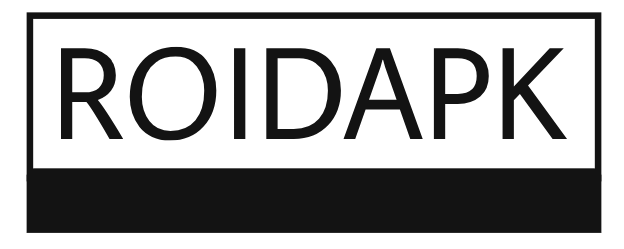Embroidery on hats has a special kind of magic—it turns ordinary caps into statement pieces. But if you’ve ever tried stitching a design onto a curved, structured hat brim only to end up with puckered fabric or distorted lettering, you know hats present unique challenges. That’s where digitizing comes in. Follow the guide to know all about on how to digitize for hat embroidery.
Why Hats Are Different
Unlike flat fabrics, hats have curves, seams, and stiff buckram lining that affect how stitches lay. A design that looks perfect on a T-shirt might warp or break threads when stitched on a cap. Proper digitizing accounts for:
- The center seam (stitches must flow around it, not fight it)
- Limited space (most hat designs max out at 3″ wide)
- Stitch angles (horizontal stitches on curved surfaces tend to gap)
This is why you can’t just use any embroidery file—you need one specifically optimized for hats.
Step 1: Start With the Right Artwork
Not all designs translate well to hats. Ideal hat embroidery artwork has:
- Bold, simple shapes (thin lines may disappear)
- Minimal small text (anything under ¼” tall likely won’t stitch cleanly)
- High contrast colors (hats often use fewer thread colors than flat embroidery)
If your design has intricate details, simplify it before digitizing. Convert gradients to solid blocks, outline tiny text, and remove unnecessary elements.
Step 2: Choose Your Digitizing Software
For beginners, these user-friendly options work well:
- Embrilliance Essentials (great for simple designs)
- Hatch Embroidery 2 (offers a free trial)
- SewArt (auto-digitizing with manual tweaks)
Avoid jumping straight into complex programs like Wilcom—they’re overkill when you’re learning.
Step 3: Key Digitizing Settings for Hats
Design Size Matters
- Front-center designs: Max 2.75″ wide x 1.5″ tall
- Side designs: Max 1.5″ diameter
Always measure your hat’s stitch area first—not all caps are equal.
Stitch Direction Is Critical
- For curved surfaces, use radial fills that follow the hat’s shape
- Avoid straight vertical stitches—they’re prone to gapping
- Angled satin stitches (30-45 degrees) lay flattest
Underlay Stitches Prevent Problems
Hats need more stabilization than flat fabrics. Always include:
- Edge run (outlines the design area)
- Center walk (reinforces the middle)
- Tatami fill (for large filled areas)
Step 4: Density Adjustments
Too dense = stiff, cracked stitches. Too light = gaps. Ideal settings:
- Fill stitches: 0.35-0.45mm density
- Satin stitches: 3.5-4.5mm width
- Small text: 1.5-2.0mm density
Pro tip: Stitch a test run on scrap hat material first. You’ll often need to adjust density based on your specific cap’s structure.
Step 5: Hooping and Positioning
Even perfect digitizing fails if the hat isn’t hooped correctly. Beginners should:
- Use stabilizer (cut-away works best for hats)
- Mark the center point with chalk before hooping
- Check that the design sits parallel to the brim (crooked embroidery screams amateur)
Magnetic hoops save frustration—they hold caps securely without distortion.
Common Hat Digitizing Mistakes (And Fixes)
Puckering Fabric
Cause: Too many stitches in one area
Fix: Reduce density by 10-15%
Thread Breaks
Cause: Sharp angles in stitch path
Fix: Add slight curves to corners in your digitizing software
Design Distortion
Cause: Ignoring the hat’s curve in digitizing
Fix: Use software’s “cap curve compensation” tool if available
Testing Your Design
Never stitch directly onto a final hat first. Instead:
- Stitch on similar scrap material
- Check for:
- Thread tension consistency
- Design centering
- Fabric lay
- Make adjustments in your digitizing file
This extra step saves ruined hats and wasted time.
Where to Find Pre-Digitized Hat Designs
Not ready to digitize yourself? These sites offer hat-ready files:
- EmbroideryDesigns.com (search “cap-friendly” designs)
- UrbanThreads.com (editable files for beginners)
- Etsy (look for sellers who specify hat optimization)
When to Hire a Pro Digitizer
Consider professional digitizing if your design has:
- Complex gradients
- Photorealistic elements
- Tiny text (under ¼”)
Good digitizers charge $15-$50 per design but save you hours of trial and error.
The Secret to Pro-Quality Hats
It comes down to three things:
- Design simplicity (hats aren’t canvases for intricate art)
- Proper digitizing settings (density, underlay, stitch angles)
- Testing (always stitch a sample first)
Master these, and you’ll turn out hats that look store-bought rather than homemade.
Final Tip: Start With Basic Designs
Your first hat embroidery shouldn’t be a detailed eagle with 15 colors. Begin with:
- 2-color logos
- Blocky text
- Simple shapes (stars, circles, bold icons)
As you gain confidence, gradually tackle more complex designs.
Remember—even the most expensive embroidery machine can’t fix poor digitizing. Take time to learn the basics, and soon you’ll be creating hat designs that make people ask, “Where’d you get that done?” The answer—”I did it myself”—will be even sweeter.

